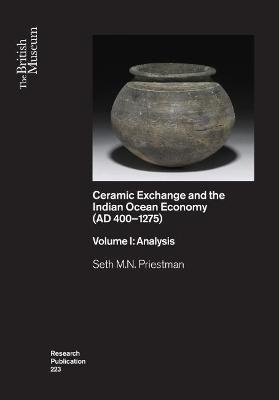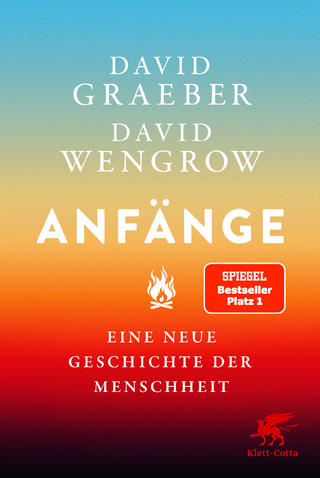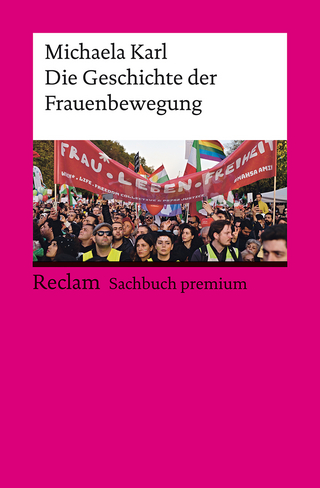
Ceramic Exchange and the Indian Ocean Economy (AD 400-1275). Volume I: Analysis
Seiten
2021
British Museum Press (Verlag)
978-0-86159-223-4 (ISBN)
British Museum Press (Verlag)
978-0-86159-223-4 (ISBN)
From AD 500-1000, the Indian Ocean emerged as a global commercial centre, and by around 750-800 a sophisticated trade network had been established. However, the Indian Ocean's commercial system has been understudied. This book documents the unique significance of ceramic finds as an indicator of long-term changes in the scale of maritime exchange
‘In this groundbreaking book, Seth Priestman proposes a very rigorous methodology together with a strong critical sense and meets the reader’s expectations. The book fills a gap in the archaeology of the Indian Ocean that is severely lacking quantitative analysis of the available data.’ - International Journal of Nautical Archaeology
From AD 500-1000, the Indian Ocean emerged as a global commercial centre, and by around 750-800 a sophisticated trade network had been established involving the movement of goods from Japan and China in the east, to southern Africa and Spain in the west. However, the Indian Ocean's commercial system has been relatively understudied, with many of the key assumptions regarding its development based on narrative textual sources and selective archaeological evidence.
This study sets out the case for the unique significance of quantified ceramic finds as an indicator of long-term changes in the scale and volume of maritime exchange in a period for which few other sources of systematic economic history survive. The publication presents archaeological data from thirteen sites distributed across the western Indian Ocean, including Siraf (Iran), Anuradhapura (Sri Lanka) and Manda (Kenya). The ceramic assemblages are considered in terms of their general compositional characteristics and the distinctions between local, regional and long-distance exchange. The volume concludes with a discussion of how this data can be used to address the broader issues of long-term economic change and the relationship between state power in the Middle East and the commercial networks of the Indian Ocean operating via the Persian Gulf.
‘In this groundbreaking book, Seth Priestman proposes a very rigorous methodology together with a strong critical sense and meets the reader’s expectations. The book fills a gap in the archaeology of the Indian Ocean that is severely lacking quantitative analysis of the available data.’ - International Journal of Nautical Archaeology
From AD 500-1000, the Indian Ocean emerged as a global commercial centre, and by around 750-800 a sophisticated trade network had been established involving the movement of goods from Japan and China in the east, to southern Africa and Spain in the west. However, the Indian Ocean's commercial system has been relatively understudied, with many of the key assumptions regarding its development based on narrative textual sources and selective archaeological evidence.
This study sets out the case for the unique significance of quantified ceramic finds as an indicator of long-term changes in the scale and volume of maritime exchange in a period for which few other sources of systematic economic history survive. The publication presents archaeological data from thirteen sites distributed across the western Indian Ocean, including Siraf (Iran), Anuradhapura (Sri Lanka) and Manda (Kenya). The ceramic assemblages are considered in terms of their general compositional characteristics and the distinctions between local, regional and long-distance exchange. The volume concludes with a discussion of how this data can be used to address the broader issues of long-term economic change and the relationship between state power in the Middle East and the commercial networks of the Indian Ocean operating via the Persian Gulf.
Seth M.N. Priestman's research focuses on the Late Antique and Medieval archaeology of the Middle East, Transcaucasia and the Indian Ocean world. He has recently held post-doctoral research positions with the Department of Asia at the British Museum and the School of History Classics and Archaeology at the University of Edinburgh. A study he undertook of the finds from the major Early Islamic port of Siraf in southern Iran held by the British Museum laid the foundation for his PhD. Seth has worked on fieldwork, projects and has published widely in the field of Middle Eastern archaeology and ceramics research.
| Erscheinungsdatum | 11.08.2021 |
|---|---|
| Reihe/Serie | British Museum Research Publications ; 223 |
| Zusatzinfo | 100; 100 |
| Verlagsort | London |
| Sprache | englisch |
| Maße | 210 x 297 mm |
| Themenwelt | Kunst / Musik / Theater ► Antiquitäten |
| Sachbuch/Ratgeber ► Geschichte / Politik ► Allgemeines / Lexika | |
| Geisteswissenschaften ► Archäologie | |
| Geisteswissenschaften ► Geschichte ► Teilgebiete der Geschichte | |
| ISBN-10 | 0-86159-223-9 / 0861592239 |
| ISBN-13 | 978-0-86159-223-4 / 9780861592234 |
| Zustand | Neuware |
| Haben Sie eine Frage zum Produkt? |
Mehr entdecken
aus dem Bereich
aus dem Bereich
die Reise der Menschheit : zwischen Aufbruch und Scheitern
Buch | Softcover (2023)
Ullstein Taschenbuch Verlag
14,99 €


